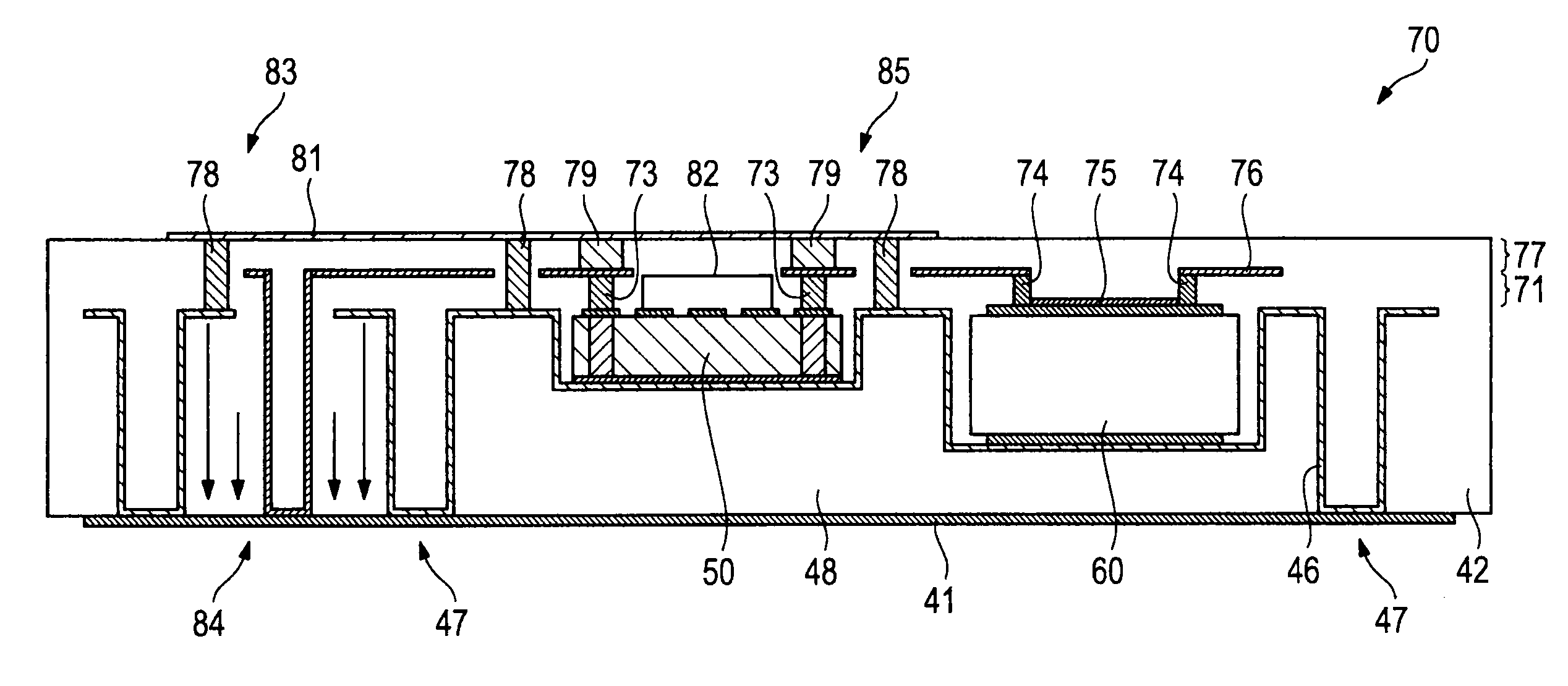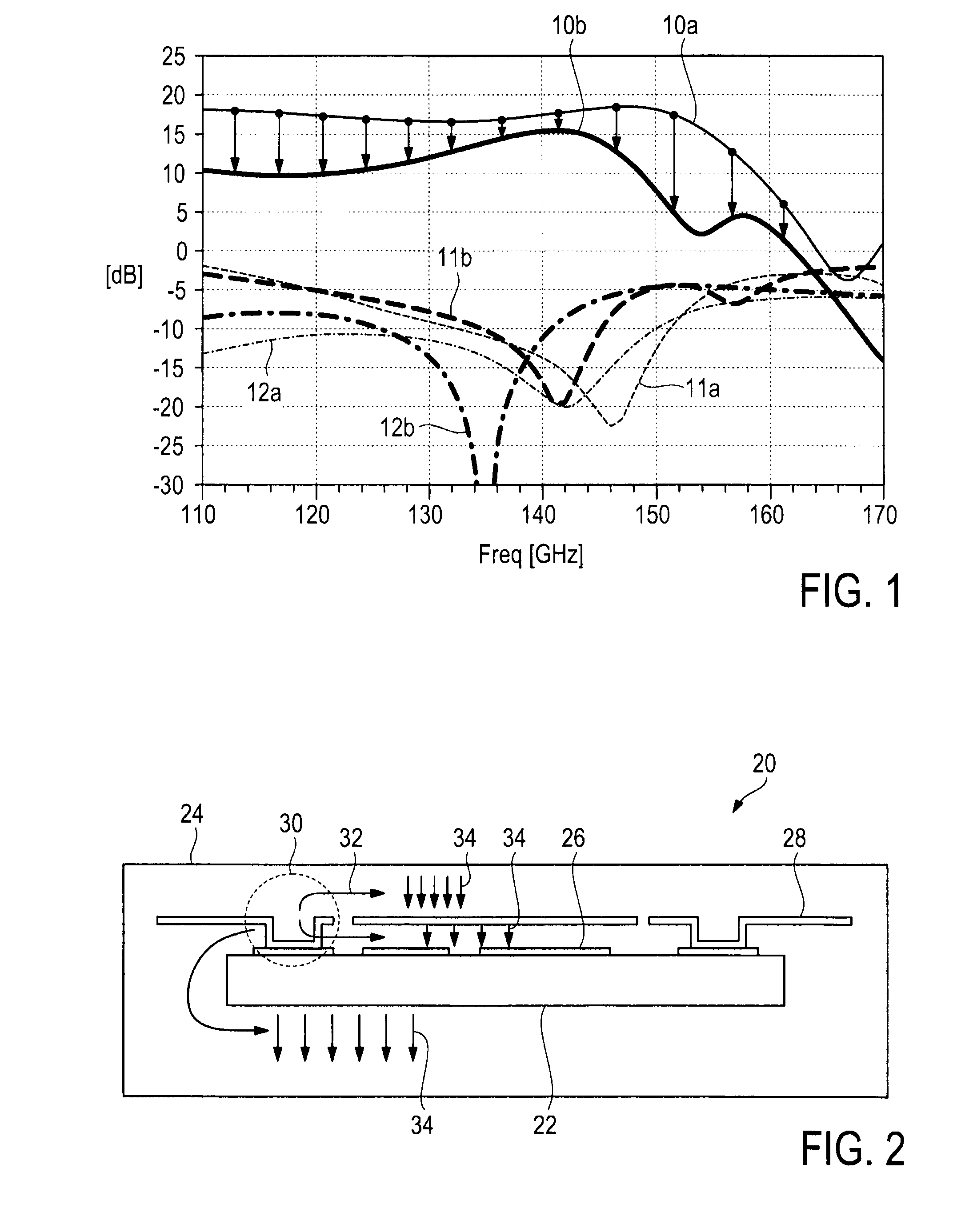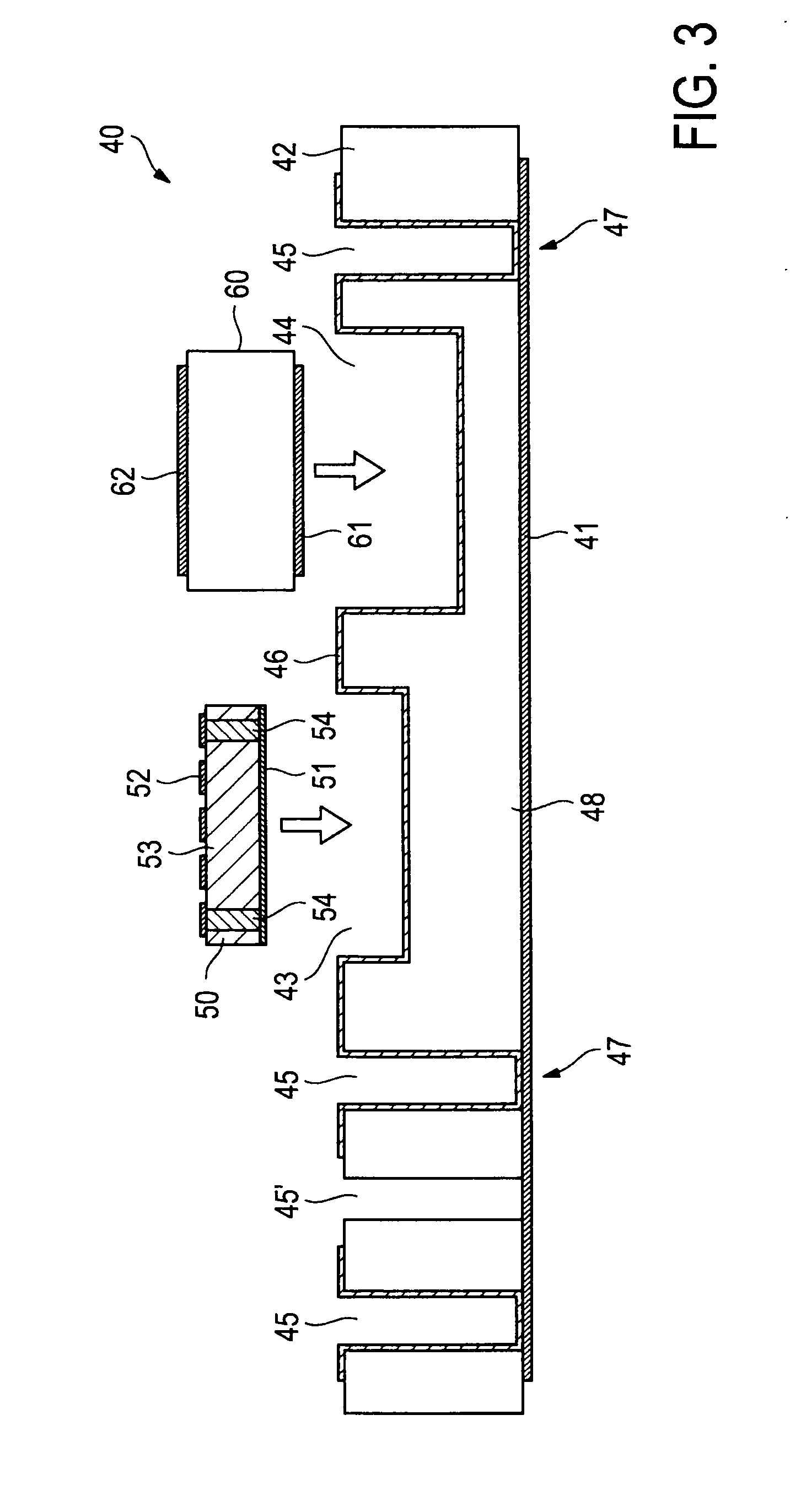Method of manufacturing a package for embedding one or more electronic components
a technology for electronic components and carrier structures, applied in the incorporation of printed electric components, semiconductor/solid-state devices, printed circuit aspects, etc., can solve problems such as disturbance of guided wave modes, chip analog front-ends or multi-channel chips, and lossy connection of chip-to-chip connections, so as to accelerate the development of such electronic systems
- Summary
- Abstract
- Description
- Claims
- Application Information
AI Technical Summary
Benefits of technology
Problems solved by technology
Method used
Image
Examples
Embodiment Construction
[0060]The present invention makes use of a method of manufacturing by which packages for embedding one or more electronic components, in particular microwave integrated circuits and discrete passive components (e.g. capacitors or resistors), are more or less cast from a single piece of material. The final package is in that sense a kind of monolithic package. The package material is preferably a light sensitive monomer that is steadily poured into place in thin layers and hardened by photo polymerization using light at UV or other wavelengths.
[0061]Such methods have become available in recent years for manufacturing of microparts and are used for integrating chips at lower frequencies, i.e. frequencies much below the microwave spectrum. Micrometer precision in vertical and lateral dimensions is possible. Common materials belong to the group of acrylics. However, these materials often exhibit high dielectric losses which are not very attractive for multichip packages at mm-wave / THz f...
PUM
| Property | Measurement | Unit |
|---|---|---|
| Width | aaaaa | aaaaa |
| Thickness | aaaaa | aaaaa |
| Electrical conductor | aaaaa | aaaaa |
Abstract
Description
Claims
Application Information
 Login to View More
Login to View More - R&D
- Intellectual Property
- Life Sciences
- Materials
- Tech Scout
- Unparalleled Data Quality
- Higher Quality Content
- 60% Fewer Hallucinations
Browse by: Latest US Patents, China's latest patents, Technical Efficacy Thesaurus, Application Domain, Technology Topic, Popular Technical Reports.
© 2025 PatSnap. All rights reserved.Legal|Privacy policy|Modern Slavery Act Transparency Statement|Sitemap|About US| Contact US: help@patsnap.com



